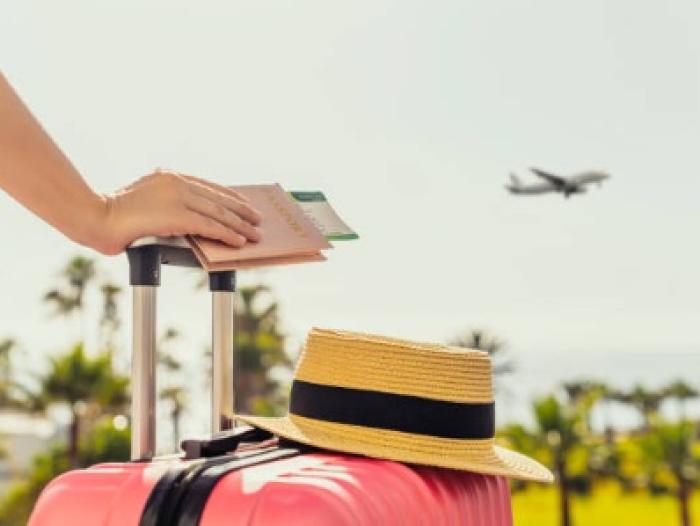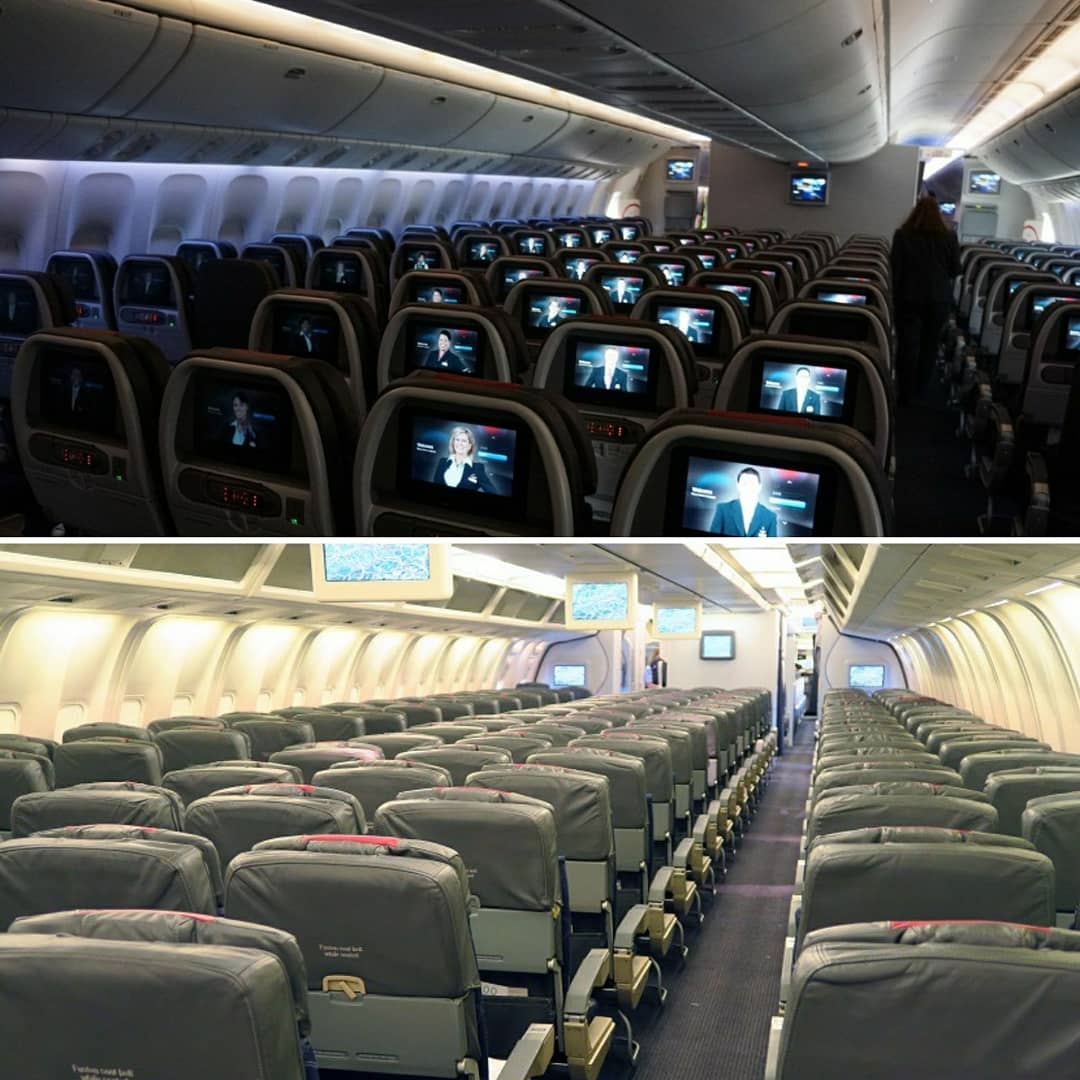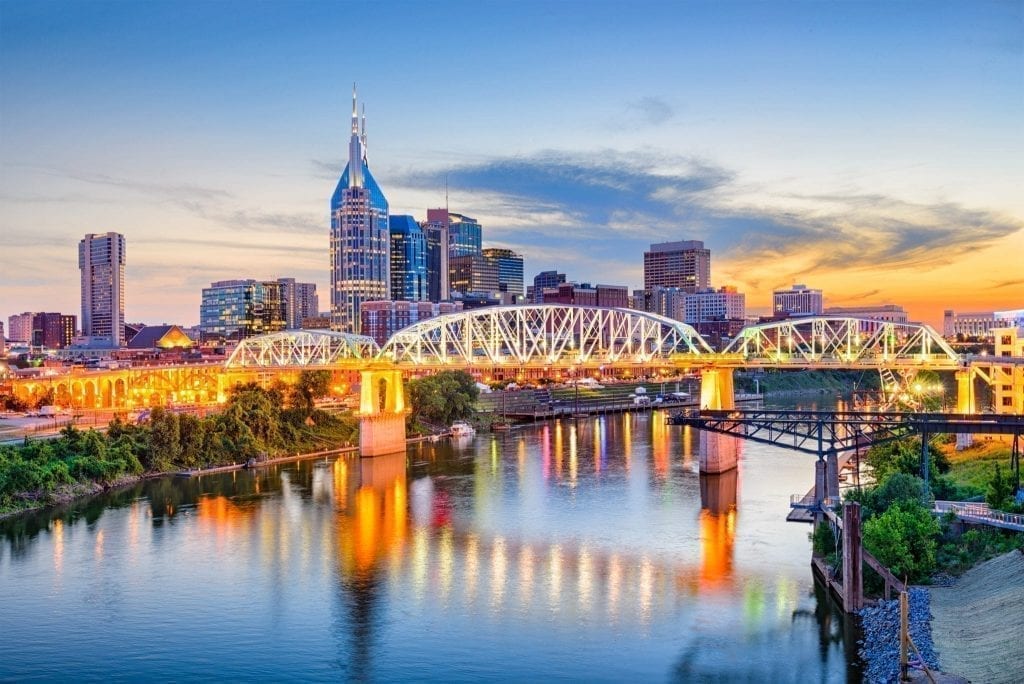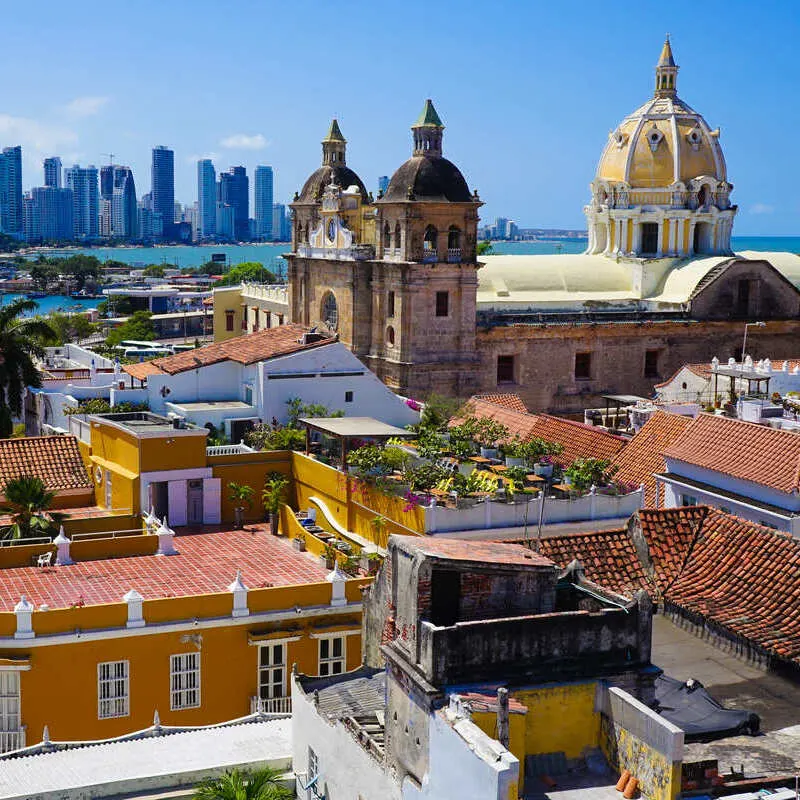March U.S. Travel Restrictions By State–Quarantine And Covid-19 Test Requirements
By: Alex Ledsom Senior Contributor Travel I write about travel, culture, food & drink.

America had a relatively good month in February, with progressively better Covid-19 statistics week-on-week and three vaccines are now in play–Johnson & Johnson, Pfizer/BioNTech and Moderna. A review of the state-by-state travel restrictions across the U.S. shows the progress being made–there are far fewer regions listed as high risk for many states, proving that travel is becoming a little easier.
As a result, many states are relaxing travel restrictions–in Alaska and Pennsylvania it is no longer necessary at the beginning of March to have a negative Covid-19 test result before arrival nor enter a mandatory quarantine. What’s more, three states no longer have state-wide mask mandates in place–Alabama’s expires 5 March and Mississippi and Texas are removing the requirement.
31 U.S. states currently have no state-wide travel restrictions
The following states do not currently have any state-wide travel restrictions; Alabama, Alaska, Arizona, Arkansas, Colorado, Delaware, Florida, Georgia, Idaho, Indiana, Iowa, Louisiana, Michigan, Mississippi, Missouri, Montana, Nebraska, Nevada, North Carolina, North Dakota, Oklahoma, Pennsylvania, South Carolina, South Dakota, Tennessee, Texas, Utah, Virginia, West Virginia, Wisconsin and Wyoming.
Two states ended state-wide travel restrictions at the beginning of March 2021. As of 1 March, negative Covid-19 tests no longer a necessity before arrival in Pennsylvania nor is the 10-day quarantine.
An announcement by Gov. Mike Dunleavy said that the state’s emergency rules had been allowed to expire meaning that it is no longer necessary to have a negative Covid-19 test to enter Alaska, although the state travel website still has the old rules in place. Voluntary testing is recommended if traveling from out-of-state.
19 states currently have travel restrictions
These are California, Connecticut, Hawaii, Illinois, Kansas, Kentucky, Maine, Maryland, Massachusetts, Minnesota, New Hampshire, New Jersey, New Mexico, New York, Ohio, Oregon, Rhode Island, Vermont, and Washington State. (Washington D.C. also has travel restrictions).
There are mandatory state-wide mask mandates in some states which don’t have state-wide travel restrictions: Arkansas, Iowa, Louisiana, and Utah.
Three states–Alabama, Mississippi and Texas–ended a state-wide mask mandate in early March. Mississippi’s Gov. Tate Reeves announced a 100{0628c999b898a902dfcf28421e106cb4ba1da59fdaade7848fd4c807354e45d3} return to opening for businesses and the end of mask mandates on 2 March. Alabama’s mask mandate currently expires on March 5 and Gov. Greg Abbott announced an end to the mask mandate in Texas, saying “it is time to open Texas 100{0628c999b898a902dfcf28421e106cb4ba1da59fdaade7848fd4c807354e45d3}”.

California–discouraging out-of-state visitors
People from out-of-state are encouraged to quarantine, although there is a mandatory 10-day isolation period in Santa Clara County and San Francisco. In most counties, hotels can welcome travelers and restaurants can serve outdoors.
In Los Angeles, all travelers over the age of 16 who are entering from another state or country must submit this online form (acknowledging that they understand and will abide by the LA County Department of Public Health’s travel requirement, and understand the State of California’s Travel Advisory). The same form must be filled in when arriving into an airport or Union station.
Connecticut–no quarantine if had Covid within 90 days
Travelers arriving into Connecticut must quarantine for 10 days except if arriving from New Jersey, New York or Rhode Island. Everyone must fill in an online health form with a risk of a $500 fine for non-compliance.
The only way to avoid this quarantine is to show proof of a negative Covid-19 test taken in the past 72 hours or to take a test upon arrival and quarantine until the results come through.
If you have had Covid-19 in the past 90 days you are also not required to quarantine but must send results from the positive test to the Commissioner of Public Health via email to: DPH.COVID-Travel@ct.gov or via fax to: (860) 326-0529.
Hawaii–negative NAAT at an approved site
In order to bypass the 10-day quarantine, passengers must have a negative nucleic acid amplification test (NAAT)–taken at an approved site–either in their hands upon arrival or uploaded into the health form online. This form will give passengers a QR code which can be given to airport screeners upon arrival.
There are, however, lots of variations within the islands, so check Hawaii’s Safe Travels website before travel.
Illinois–there are now 18 ‘safe’ states
In Illinois, travel is unrestricted. However, since mid-January, arrivals into Chicago are categorised into two groups, orange and yellow, based on the infection rates in the home states.
In February, there was only one state, Hawaii, from which arrivals were not subject to any restrictions, but in March, there are now 18: Hawaii, North Dakota, Indiana, Minnesota, Mississippi, Texas, Idaho, Louisiana, Nebraska, Maryland, Wisconsin, Nevada, Arkansas, Washington, Michigan, Maine, Missouri, and Oregon (Puerto Rico and Washington D.C. are also included).
Anyone from an orange state must quarantine for 10 days or have a negative Covid-19 test result no more than 72 hours old. This currently applies to the other 31 states. (Illinois is not currently categorised on any list).

Kansas–returning travelers can ‘test out’ at day 8
Kansas has some of the most specific travel requirements in the U.S., in that a mandatory quarantine is needed for anyone who has:
- traveled on or after 26 February 2021 to the countries of Mayotte, the Czech Republic, San Marino, Montenegro or the Seychelles;
- taken a sea or river cruise since March 15 2020; and/or
- participated in an out-of-state mass gathering of more than 500 people (where masks were not worn and it was impossible to keep further than 6 feet apart).
If someone falls into this category they can ‘test out’ of a 10-day quarantine by taking a test on day 6 of quarantine and being released on day 8 when the negative result comes through (instead of day 11). Kansas updated its travel requirements every 2 weeks.
Kentucky–advises quarantine for out-of-state travelers
Kentucky has been discouraging out-of-state travel and asks that you quarantine for 14 days if you have traveled to any other state.
Maine–New Hampshire and Vermont exempt
Maine’s “Know Before You Go” campaign is encouraging visitors to test before they leave home and upon arrival visitors must enter a 10-day quarantine or sign to say they have had a negative Covid-19 test in the past 72 hours. Arrivals with pending tests must isolate until results come through. All types of Covid-19 tests are acceptable. All arrivals must sign a Certificate of Compliance. Residents of New Hampshire and Vermont are exempt from both conditions of entry.
Maryland–tests can be taken upon arrival
Anyone arriving into Maryland from out-of-state must quarantine for 10 days or show proof of a negative Covid-19 test taken up to 72 hours before their arrival. Visitors are also advised to re-test 72 hours later. Anyone who hasn’t been tested can take a test upon arrival and self-isolate until the results come through.
Travelers arriving from Delaware, Pennsylvania, Virginia, West Virginia and Washington, D.C. are exempt. People who do not conform to these requirements will face a $5,000 fine or a year in prison.
Massachusetts–Hawaii remains the only low-risk state
All out-of-state arrivals must fill in a travel form. Arrivals from high-risk states must quarantine for 10 days or produce a negative Covid-19 test taken in the last 72 hours. The fine for non-compliance is $500. As of 24 February, Hawaii remains the only low-risk state.
Minnesota–quarantine, if travel necessary
Visitors are asked to quarantine for 14 days upon entry (or re-entry) although out-of-state travel is discouraged.

New Hampshire–New England travelers exempt
If entering New Hampshire from other than a New England state (Maine, Vermont, Massachusetts, Connecticut and Rhode Island), travelers must quarantine for 10 days. However, travelers can ‘test out’ after day 7 with a negative PCR test.
This rule does not apply to anyone who has had their second Covid-19 vaccine more than 14 days prior to travel–these people do not need to get tested or quarantine. People who had Covid-19 more than 90 days prior to travel and are recovered (and have proof) are also exempt from testing or quarantine.
New Jersey–all interstate travel is ill-advised
The state is currently advising against all non-essential interstate travel.
Visitors and returning travelers must quarantine for 10 days if they haven’t been tested. Those people who already have a negative test are asked to isolate for 7 days, regardless of later results. The quarantine is voluntary but compliance is expected.
People who arrive from New York, Connecticut, Pennsylvania and Delaware are exempt. Travelers from other than these four states must complete an online survey.
New Mexico–Hawaii is the only low risk state
In New Mexico, the state is asking that visitors self-quarantine for 14 days or the entire length of stay, if it is shorter than 2 weeks, even with a negative Covid-19 test from all high-risk states (a 5{0628c999b898a902dfcf28421e106cb4ba1da59fdaade7848fd4c807354e45d3} or higher positivity rate or a positive test rate higher than 80 per one million residents, as measured over a 7-day rolling average). Every state is currently considered a high-risk state, except Hawaii.
New York–test on day 4 to leave quarantine
Anyone arriving from a state which does not border New York (New Jersey, Connecticut, Pennsylvania and Delaware) must quarantine for 10 days, but visitors can ‘test out’ of quarantine if they arrive with a negative test taken three days before arrival and then quarantine for three days. Travelers with negative results from a second test taken on day four may leave quarantine.
All visitors must fill out a Traveler Health Form and any visitor not complying with regulations, faces a fine of up to $10,000–enforcement teams are currently stationed at Port Authority and regional airports.
People who leave New York for less than 24 hours do not need to get a test before returning, nor do they need to quarantine. They must, however, get a Covid-19 test on the fourth day back and fill in the traveler form.
Ohio–quarantine needed from 5 states
Ohio is restricting travel from states with a positive testing rate of 15{0628c999b898a902dfcf28421e106cb4ba1da59fdaade7848fd4c807354e45d3} where arrivals must self-quarantine for 14 days and this currently includes five states–South Dakota: 22.3{0628c999b898a902dfcf28421e106cb4ba1da59fdaade7848fd4c807354e45d3}, Kansas: 22.1{0628c999b898a902dfcf28421e106cb4ba1da59fdaade7848fd4c807354e45d3}, Alabama: 22.0{0628c999b898a902dfcf28421e106cb4ba1da59fdaade7848fd4c807354e45d3}, Iowa: 21.0{0628c999b898a902dfcf28421e106cb4ba1da59fdaade7848fd4c807354e45d3}, and Idaho: 21.0{0628c999b898a902dfcf28421e106cb4ba1da59fdaade7848fd4c807354e45d3}.
Cincinnatti.com reported that Ohio officials are cautious about Kentucky and Mississippi who have experienced reporting irregularities, which means an accurate positivity rate cannot be calculated. They are advising caution when traveling to and from these two states.
Oregon–new county-by-county risk map
Any arrivals into Oregon, including returning residents from out-of-state, must self-isolate for 14 days. Non-essential travel and tourism is ill-advised.
Oregon also has a county-by-county map which details a risk assessment before traveling.

Rhode Island–vaccine recipients must still quarantine
Rhode Island visitors must quarantine for 14 days if arriving from states which have a positive testing rate of 5{0628c999b898a902dfcf28421e106cb4ba1da59fdaade7848fd4c807354e45d3} or more, or they can opt out if they have a negative Covid-19 test taken in the last 72 hours. However, this exception doesn’t apply to international travelers. Visitors from out-of-state must also complete a certificate of compliance and a travel screening form. Travelers may take a test upon arrival and quarantine until they receive a negative Covid-19 test result.
The updated spreadsheet of states which are above 5{0628c999b898a902dfcf28421e106cb4ba1da59fdaade7848fd4c807354e45d3} lists Alabama, Arkansas, Delaware, Florida, Georgia, Idaho, Iowa, Kansas, Kentucky, Mississippi, New Jersey, North Carolina, Ohio, Oklahoma, Pennsylvania, South Carolina, South Dakota, Tennessee, Texas, Utah and Virginia. This is much fewer than in February.
Crucially, the rules still apply to travelers who have had the Covid-19 vaccination. However, if people have had Covid-19 in the past 90 days and completed isolation periods, they do not need to test or quarantine upon arrival.
Vermont–strictest protocols and lowest rates
As reported by CNN, Vermont has had one of the strictest protocols in place for travelers and one of the lowest Covid-19 rates in the U.S.
The state has a 14-day quarantine in place for anyone arriving or returning to Vermont. Visitors can end the quarantine after 7 days if they can show proof of a negative Covid-19 test.
Anyone arriving in Vermont in a private car or plane (as well as rental cars) can choose to complete quarantine and testing in another state before arriving. Anyone staying in short-term rental or lodging as well as at campsites must complete a certificate of compliance or tick an online compliance statement when they check-in, to ensure they have understood quarantine requirements.
Washington D.C.–Day visitors are exempt from testing
Anyone arriving into Washington D.C. from a high-risk state (more than 10 cases per 100,000 people) and visiting for more than 24 hours must get a negative Covid-19 test no more than 72 hours before their arrival. If the stay is longer than three days, another test must be done three to five days after arrival. Travelers from Maryland and Virginia are exempt.
Washington State–quarantine for 14 days
Residents are not encouraged to travel and anyone arriving and returning from out-of-state is asked to self-isolate for 2 weeks. Air passengers must obtain a negative viral Covid-19 test within 3 days of travel or present proof of recovery from Covid-19 to officials upon entry.
Travel increases the chances of spreading and getting Covid-19. The CDC recommends postponing all travel, stating that “staying home is the best way to protect yourself and others from Covid-19,” and advises that even though people may feel well and not have any symptoms, they “can still spread Covid-19 to family, friends, and community.”Follow me on Twitter or LinkedIn. Check out my website. Alex Ledsom
By:Alex LedsomSenior, Contributor Travel, March 2021, March U.S. Travel Restrictions By State–Quarantine And Covid-19 Test Requirements, Forbes, Recovered from: https://www.forbes.com/sites/alexledsom/2021/03/04/march-us-travel-restrictions-by-statequarantine-and-covid-19-test-requirements/?sh=1da3efdf1ff1






